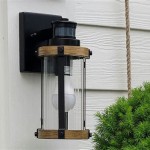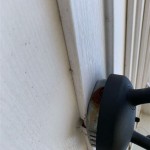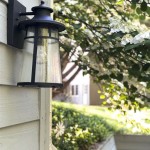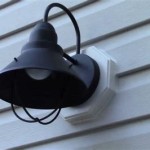How to Repaint Outdoor Planters: A Comprehensive Guide
Outdoor planters, exposed to the elements, inevitably show signs of wear and tear. Repainting them is a cost-effective way to revitalize their appearance and extend their lifespan. This article provides a detailed guide on how to effectively repaint outdoor planters, covering everything from preparation to finishing touches.
Key Point 1: Preparing the Planter for Repainting
Proper preparation is critical for a successful and long-lasting paint job. This stage involves cleaning, repairing, and priming the planter surface.
Cleaning: The initial step is to thoroughly clean the planter. Remove all plants, soil, and debris. A stiff brush and water can be used to scrub away dirt, moss, and algae. For stubborn stains or mildew, a solution of water and bleach (mixed according to the bleach manufacturer's instructions) can be applied. After cleaning with bleach, rinse the planter thoroughly with clean water to remove any residual chemicals. Allow the planter to dry completely before proceeding.
Repairing: Inspect the planter for cracks, chips, or other damage. Small cracks can be filled with an epoxy-based filler specifically designed for outdoor use. Follow the manufacturer's instructions for mixing and application. For larger cracks or significant damage, more extensive repairs may be necessary, potentially involving patching or reinforcement. Allow the filler to dry completely according to the product's instructions, and then sand the repaired areas smooth with fine-grit sandpaper.
Sanding: Sanding the planter surface creates a slightly rough texture, which promotes better adhesion of the paint. Use medium-grit sandpaper to lightly sand the entire surface of the planter. Focus on areas where the existing paint is peeling or flaking. After sanding, remove dust and debris with a tack cloth or a damp cloth. Allow the planter to dry completely.
Priming: Priming is an essential step, particularly for porous materials like terracotta or concrete. A primer creates a uniform surface for the paint and helps to seal the planter, preventing moisture from seeping into the material. Choose an exterior-grade primer that is compatible with the type of paint being used. Apply the primer evenly, using a brush, roller, or spray gun. Allow the primer to dry completely according to the manufacturer's instructions. Some primers may require light sanding after drying to create an even smoother surface for painting.
Consider the specific material of the planter when selecting a primer. For terracotta, a primer designed for porous surfaces is necessary to prevent the paint from being absorbed. For plastic, a primer that promotes adhesion to plastic is essential. For metal, a rust-inhibiting primer should be used to prevent corrosion.
Key Point 2: Selecting the Right Paint and Applying It
Choosing the appropriate paint and applying it correctly are crucial for achieving a durable and aesthetically pleasing finish.
Paint Selection: Select an exterior-grade paint that is specifically formulated for outdoor use. These paints are designed to withstand exposure to sunlight, rain, and temperature fluctuations. Acrylic latex paints are a popular choice for outdoor planters due to their durability, flexibility, and resistance to fading. Oil-based paints offer excellent adhesion and durability but may require more specialized application techniques and longer drying times. Consider the desired finish when selecting paint. Options include matte, satin, semi-gloss, and gloss. Matte finishes are less reflective and can hide imperfections, while gloss finishes are more durable and easier to clean.
Application Techniques: Before applying the paint, stir it thoroughly to ensure even color distribution. Apply the paint in thin, even coats, using a brush, roller, or spray gun. Avoid applying too much paint at once, as this can lead to drips and runs. Allow each coat of paint to dry completely according to the manufacturer's instructions before applying the next coat. Two or three coats of paint are typically sufficient for achieving full coverage and a durable finish.
Brush Application: When using a brush, choose a brush that is appropriate for the type of paint being used. For latex paints, use a synthetic brush. For oil-based paints, use a natural bristle brush. Apply the paint in long, even strokes, overlapping each stroke slightly to avoid gaps. Clean the brush thoroughly after each use with the appropriate solvent.
Roller Application: When using a roller, choose a roller cover that is appropriate for the surface texture of the planter. For smooth surfaces, use a roller cover with a short nap. For textured surfaces, use a roller cover with a longer nap. Apply the paint in a "W" pattern, then fill in the "W" to create an even coat. Clean the roller cover thoroughly after each use.
Spray Gun Application: When using a spray gun, follow the manufacturer's instructions for setting up and operating the sprayer. Practice spraying on a piece of cardboard or scrap material before applying the paint to the planter. Apply the paint in thin, even coats, holding the spray gun at a consistent distance from the surface. Clean the spray gun thoroughly after each use.
Consider the environmental conditions when painting. Avoid painting in direct sunlight or during periods of high humidity. The ideal temperature range for painting is typically between 50°F and 85°F.
Key Point 3: Protecting and Maintaining the Repainted Planter
Protecting the newly repainted planter and maintaining it properly will help to prolong its lifespan and keep it looking its best.
Sealing: After the paint has dried completely, consider applying a clear coat sealant to protect the painted surface from scratches, fading, and moisture. Choose an exterior-grade sealant that is compatible with the type of paint being used. Apply the sealant evenly, using a brush, roller, or spray gun. Allow the sealant to dry completely according to the manufacturer's instructions.
Drainage: Ensure that the planter has adequate drainage holes to prevent water from accumulating in the bottom. Excess water can lead to root rot and can also damage the painted surface. If the planter does not have drainage holes, drill holes in the bottom using a drill bit that is appropriate for the material of the planter.
Winter Protection: In cold climates, protect the planter from freezing temperatures. Freezing and thawing can cause the paint to crack and peel. Consider moving the planter indoors or wrapping it in burlap or other insulating material. Prevent direct contact with the ground by placing the planter on supports such as bricks or planter feet. This prevents moisture wicking and helps air circulate under the planter.
Cleaning and Maintenance: Regularly clean the planter with a mild soap and water solution to remove dirt and debris. Inspect the painted surface periodically for signs of damage, such as scratches, chips, or peeling paint. Touch up any damaged areas promptly to prevent further deterioration. Avoid using harsh chemicals or abrasive cleaners, as these can damage the painted surface. A simple rinse with a garden hose can remove light dirt and dust.
Sun Protection: Prolonged exposure to direct sunlight can cause the paint to fade over time. Consider placing the planter in a location that receives partial shade or using a UV-resistant paint or sealant. Rotating the planter periodically can also help to ensure even exposure to sunlight.
By following these steps, a planter can be effectively repainted, enhancing its appearance and extending its useful life. The key is in diligent preparation, careful application, and consistent maintenance.

How To Paint An Outdoor Planter Or Trellis True Value

3 Tips For Spray Painting Outdoor Planters H2obungalow

How To Paint A Garden Pot And Outdoor Containers At Blu

Painting Garden Pots With Annie Sloan Chalk Paint Our Southern Home

Spray Painting Ceramic Pots

Spray Painting Ceramic Pots

Refurbished Flower Pots Using Spray Paint Huckleberry Life

3 Tips For Spray Painting Outdoor Planters H2obungalow

How To Spray Paint Plastic Planters In 7 Easy Steps

The Best Spray Paint For Plastic Planters Green With Decor







